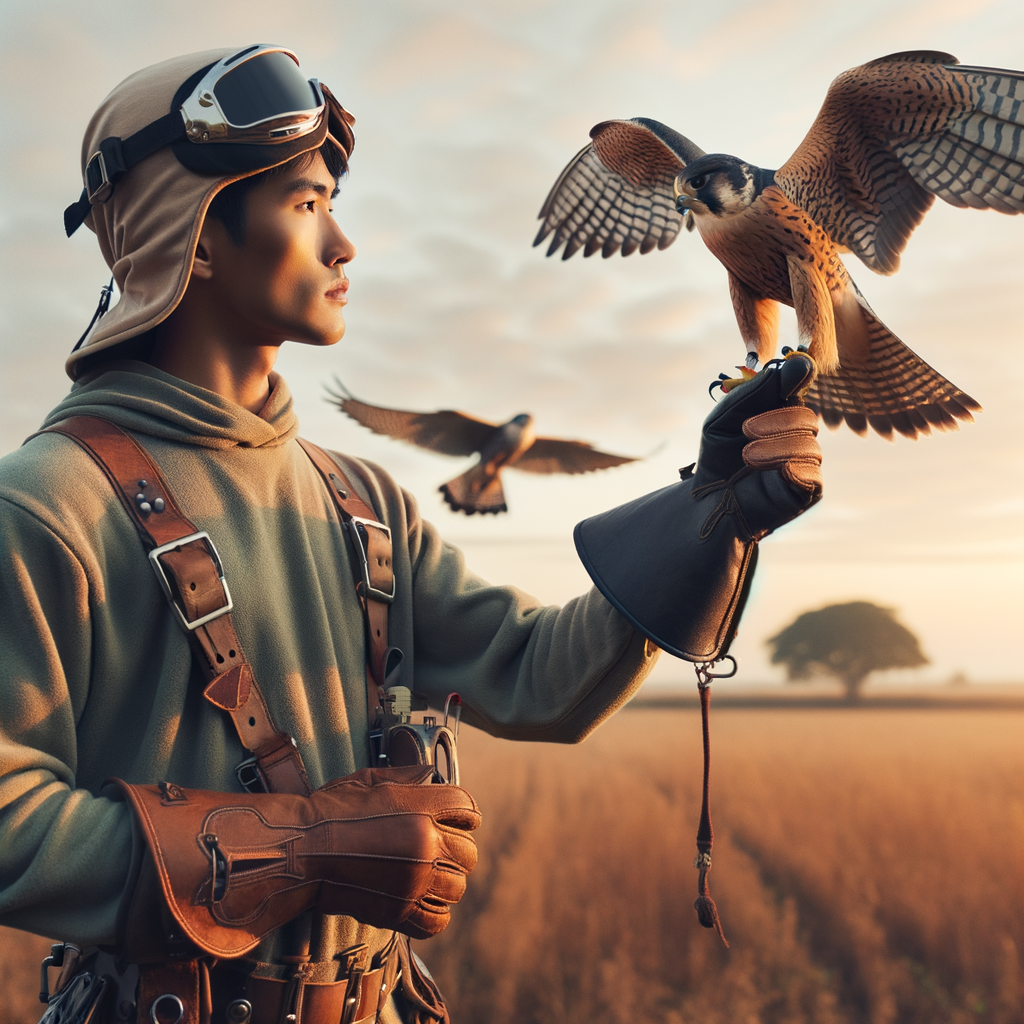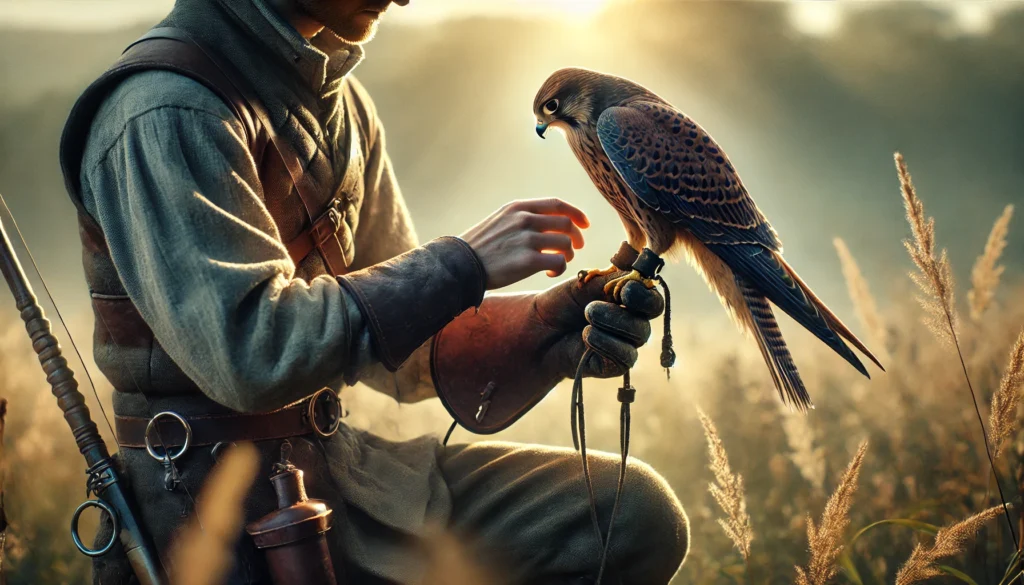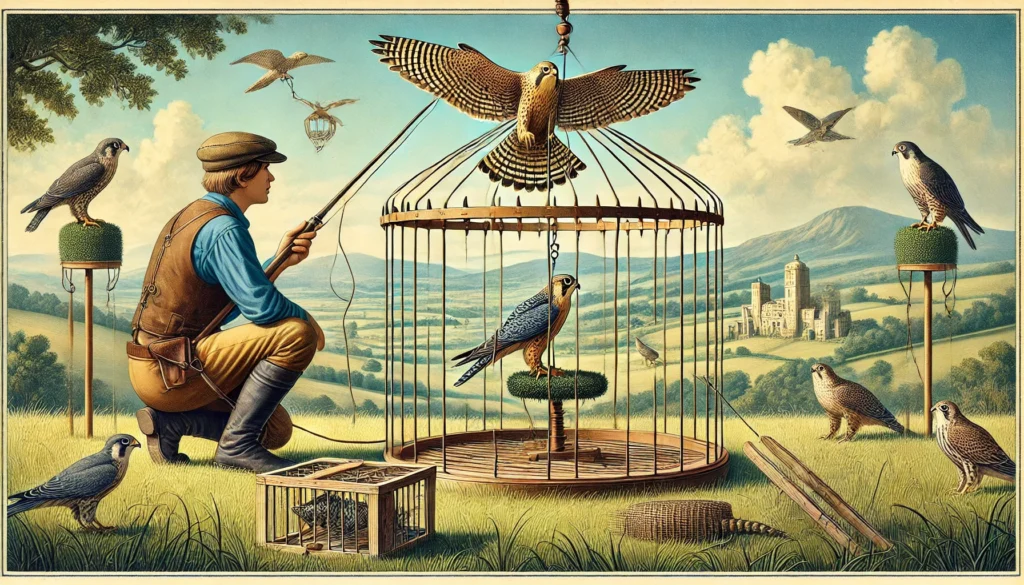Falconry Safety Tips
- Wear Protective Equipment: Always wear gloves and safety gear to protect yourself from the bird’s talons and beak.
- Observe Your Bird’s Behavior: Regularly check your bird’s health and mood. Signs of stress or illness should be addressed immediately.
- Ensure Proper Training: Make sure both you and your bird are adequately trained. Attend workshops and seek guidance from experienced falconers.
- Provide Nutritious Diet: Feed your falcon a balanced and nutritious diet to maintain its health and energy levels.
- Practice Safe Handling: Handle your bird gently and respectfully to build trust and prevent injuries.
- Maintain Cleanliness: Keep your bird’s living environment clean to prevent diseases and infections.
- Monitor Weather Conditions: Avoid flying your bird in adverse weather conditions like strong winds or storms to prevent accidents.
- Emergency Preparedness: Have a plan in place for emergencies, including knowing the location of the nearest avian vet.
- Secure Flying Areas: Ensure that the area where you let your bird fly is safe and free from potential hazards.
- Use Proper Equipment: Always use well-maintained and appropriate equipment, such as hoods and leashes, to ensure your bird’s safety.
Essential Falconry Safety Tips: Keep Yourself and Your Feathered Friend Safe
Top o’ the morning to you, young raptor enthusiasts! Imagine you’re about to embark on a thrilling adventure, much like a brave Irish knight setting out on a quest with your noble steed. But instead of a horse, you have a magnificent falcon by your side! Now, just like any brave knight needs their shield and armor, you too need to be prepared with the right safety tips to ensure your falconry experience is both fun and secure.
This article is your trusty guide to mastering those crucial safety tips, much like a map leading you to hidden treasure. Keep reading to unlock valuable advice on handling your falcon, choosing the right equipment, and understanding the signals your bird sends you. It’s not just about safety ‘ it’s about being responsible and ensuring that every flight is a delightful journey for both you and your feathered friend. So, grab your glove, perch up, and let’s dive into the essential falconry safety tips that will keep you and your raptor soaring high and safe!
Falconry Safety: Ensuring Safe Practices for Beginners
Falconry is an amazing sport that lets people build a close bond with these magnificent birds of prey. However, when engaging in falconry, it’s important to stay safe and practice responsible methods. This includes knowing and following falconry safety guidelines. Let’s dive into some essential safety tips to help you enjoy this thrilling sport responsibly.
Understanding Falconry Safety
When getting started, it’s crucial to understand what safe falconry practices entail. Falconry is no simple hobby; it requires dedication, respect for the birds, proper training, and the use of specific equipment.
For more information about the history and evolution of this sport, you can check out our page on The History of Falconry.
Essential Equipment for Safety
Using the right equipment can significantly enhance falconry safety. Some essential items include gloves, hoods, jesses, and leashes. These tools help protect both the falconer and the bird. Over time, you may find the need to explore other equipment such as GPS trackers and telemetry for tracking your bird. For all your equipment needs, visit Falconry Equipment.
Beginner Safety in Falconry
For those new to the sport, there are specific beginner safety falconry practices to adopt. Always start with a mentor who has experience. This will help you learn the correct methods and practices first-hand. Also, begin with easier-to-handle birds such as American Kestrels or Red-footed Falcons. You can find more beginner tips and guidance at Falconry for Beginners.
What Are the Dangers of Falconry?
You might be wondering: What are the dangers of falconry? While falconry is generally safe with the right knowledge and preparation, there are still risks involved. Injuries can happen from bird talons and beaks, or from mishandling equipment. It’s crucial to handle the birds gently and provide them with proper care to avoid stressing them, which could lead to aggressive behavior or health issues. To understand falcon health better, visit our section on Falcon Health and Nutrition.
Legal and Ethical Considerations
Stay informed about legal requirements and ethical guidelines to ensure your practice is lawful and humane. Whether it’s acquiring permits or following regional laws, compliance is essential for both your safety and the bird’s welfare. Visit our page on Legal Aspects of Falconry for more information.
Join a Falconry Club
Another fantastic way to ensure safe falconry practices is by joining a local falconry club. Clubs offer a wealth of experience and peer support. They also provide opportunities for continued learning and participation in community events. Learn more by visiting Falconry Clubs.
Key Aspects of Falconry Safety Tips
Licensing Requirements
To practice falconry safely, specific licensing is mandatory. Here’s a quick look at the process:
| License Type | Requirements |
|---|---|
| Apprentice | Minimum age of 18, sponsor from a General or Master Falconer, and 2 years of experience |
| General Falconer | Pass an exam, have facilities and gear inspected, and at least 2 additional years of experience |
| Master Falconer | Minimum 5 years as a General Falconer and pass advanced exams |
Housing and Handling
Proper housing and handling of the birds are crucial:
- Housing Standards: Falcons need a secure mews (a birdhouse) and weathering area that meet national standards.
- Careful Handling: Handle raptors with care to avoid stress and injury. Use appropriate equipment like gloves, perches, and safety chambers.
Wildlife and Environmental Protection
Falconry must be practiced responsibly to protect wildlife and the environment:
- No Harassment: Do not harm or chase protected wildlife, including endangered species. Any accidental captures must be reported within 48 hours.
- Release Protocols: Only native, captive-bred raptors can be released into the wild with proper authorization.
Conservation Education
Falcons play a significant role in conservation education:
- Authorized Programs: Use raptors in authorized conservation programs. These should be non-profit, with fees only covering costs.
- Direct Supervision: Programs must be conducted under direct supervision to ensure both the bird’s and the public’s safety.
Record Keeping and Data Protection
Keeping accurate records is essential:
- Activity Reporting: Report all activities such as acquisitions, transfers, and losses to authorities promptly.
- Database Maintenance: Maintain correct data in the falconry database. Use real-time data flow visibility to protect sensitive information.
| Activity | Reporting Timeframe |
|---|---|
| Wild Take | Within 24 hours |
| Acquisitions | Within 72 hours |
| Transfer or Loss | Within 48 hours |
Ethical and Responsible Practices
Falconry requires a high level of dedication and ethical conduct:
- Ethical Standards: Follow strict ethical standards and all relevant laws to ensure safe and responsible falconry.
- Long-Term Commitment: Falconry is a lifestyle choice that demands patience, commitment, and a deep respect for wildlife.
Equipment and Safety Gear
Using the correct equipment and safety gear is vital for both falcon and falconer safety:
- Gloves and Safety Chambers: These protect handlers from injury. For example, a red-tailed hawk’s grip can reach 200 pounds per square inch, necessitating robust protective gear.
- Proper Nutrition: Criticisms of inhumane treatment are mitigated by ensuring birds receive adequate nutrition and care, debunking the myth of intentional starvation for training purposes.
By following these safety guidelines, embarking on a falconry journey can be a rewarding and enriching experience.
Ensuring Safety in Falconry
To enjoy falconry safely in 2024, it’s crucial to follow some essential guidelines. First, having the proper licensing and completing a thorough apprenticeship are key steps to beginning your falconry journey. Ensuring your raptors have appropriate housing and receiving regular, attentive care is equally important.
Additionally, familiarize yourself with local regulations, particularly those related to wildlife protection and reporting activities. Remember to handle your birds with care, avoid harmful practices, and always prioritize their well-being.
By following these practices and approaching falconry with dedication and respect, you’ll create a safe, rewarding experience for both you and your raptors. Happy falconing!



